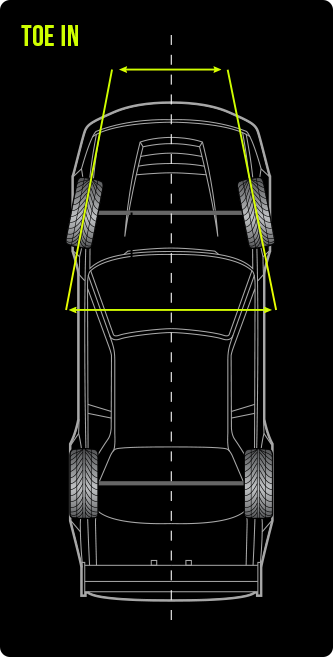
The chassis guide
TOE SETTING
Toe is the angle of the wheels in relation to the “Center Line” (a line straight through the car seen from above). So if the wheels are slightly angled inwards or outwards. If they stand inwards, it is called "toe in" and outwards, of course, it is called "toe out". An easy way to keep track of this in the beginning is if you look down at your feet and pretend these are your wheels. If you then point your toes in, you have "toe in" and if you pose like Charlie Chaplin (toes outward), you have "toe out".CAMBER
Camber is the angle that tells you how much the wheel leans sideways (negative/positive).


TOE SETTING
Toe is the angle of the wheels in relation to the “Center Line” (a line straight through the car seen from above). So if the wheels are slightly angled inwards or outwards. If they stand inwards, it is called "toe in" and outwards, of course, it is called "toe out". An easy way to keep track of this in the beginning is if you look down at your feet and pretend these are your wheels. If you then point your toes in, you have "toe in" and if you pose like Charlie Chaplin (toes outward), you have "toe out".CAMBER
Camber is the angle that tells you how much the wheel leans sideways (negative/positive).


CASTER - SHOCK ABSORBER ADJUSTMENT
Caster is the angle of the shock absorber, so to speak. The easiest way to explain it is to look at a bicycle from the side. If you draw a line along the front fork and all the way down to the ground, then a line vertically through the hub of the front wheel. Then it is the angle that is at the top that is the caster angle. This is measured in degrees. What you can benefit from with the caster angle is that you can make the car want to steer back faster. It can e.g. assist in the transition from one curve to another.

Senast uppdaterad:
Publicerad:


.jpg)

.jpeg)
